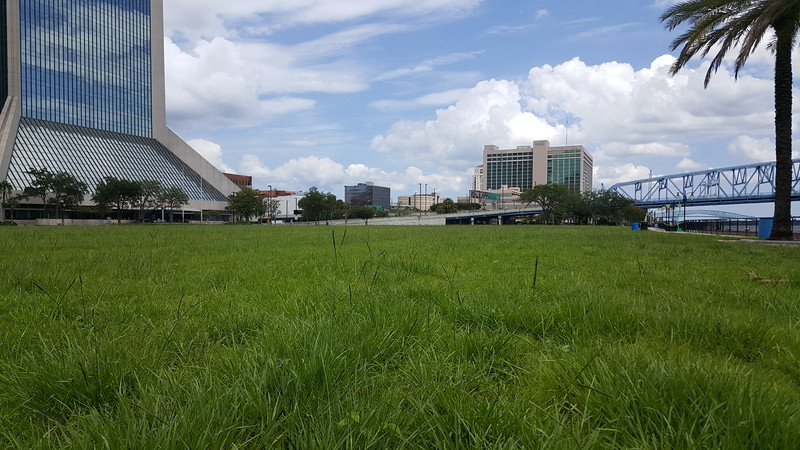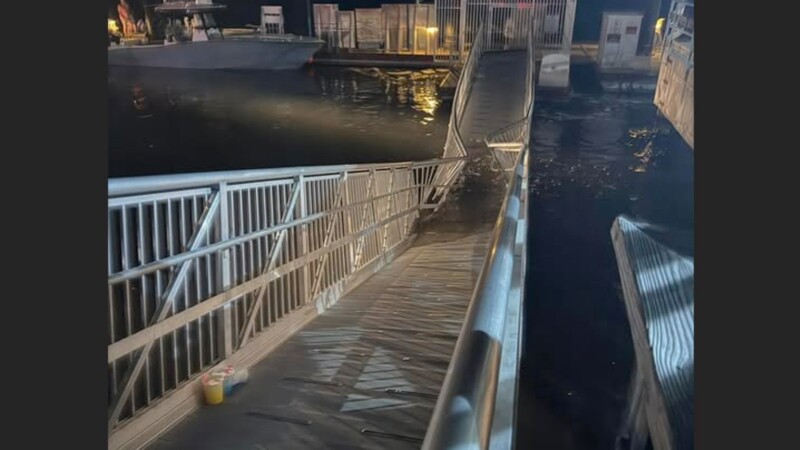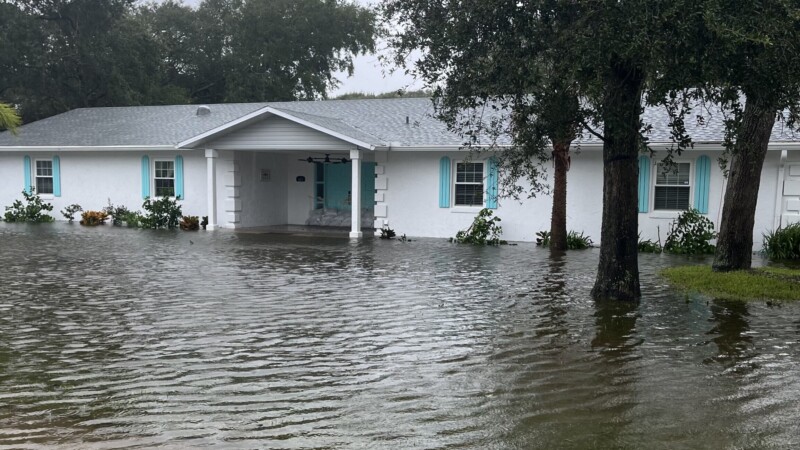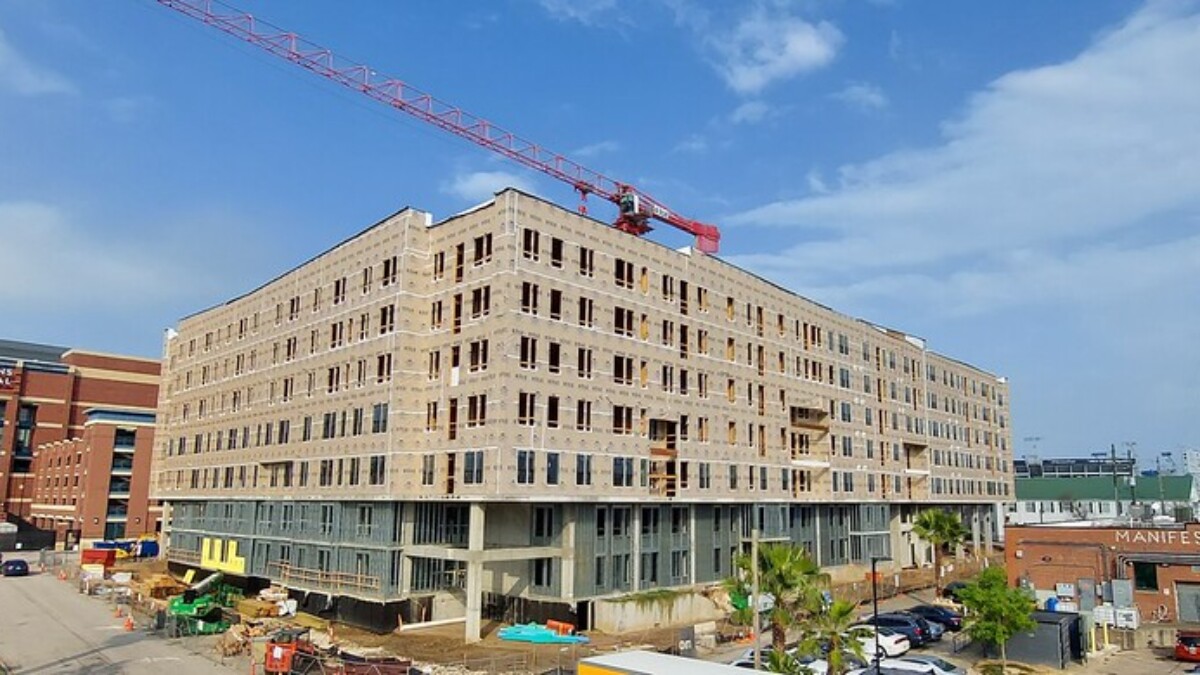
In February 2019, the City of Jacksonville announced its controversial plan to buy and raze the old Jacksonville Landing. While many hoped an iconic new space would soon replace the faded festival marketplace, four years later, it’s still a grass field. Here’s a look back at the decisions that led to “Lenny’s Lawn” and what the future may hold.
The Jacksonville Landing

The Jacksonville Landing opened in 1987 as the First Coast’s own festival marketplace, a new type of shopping market pioneered by the Rouse Company in the 1970s. Festival marketplaces were an attempt to help revive flagging downtowns and urban areas by creating new spaces that clustered retail and dining. Rouse had major successes with two early examples of the concept, Boston’s Faneuil Hall and Baltimore’s Harborplace, which inspired a rush of similar structures across the U.S. over the next two decades, from Battle Creek, Michigan to New York City.
Rouse was always dubious that festival marketplaces would work in smaller cities, but moved ahead in cases where cities or local institutions were willing to put in funding for a chance at renewal. The early market research proved correct, and unfortunately most festival marketplaces, especially those in small and mid-sized cities, struggled to live up to the promise. Such was the case with the Jacksonville Landing, where most of the retail shops had closed by 2010.

Still, the Landing’s waterfront restaurants, courtyard and special events could still draw crowds. The Landing served as the city’s main public square for events, and in fact it provided the last remaining concentration of restaurants and bars that were consistently open on nights and weekends anywhere in Downtown. For years, the Landing owners, Downtown advocates and officials in several mayoral administrations worked to find a solution that would fix the Landing’s problems while building up its strengths.
In 2019, Mayor Lenny Curry announced that Jacksonville finally had an answer that would bring the Landing space into the future. Unfortunately, as it turned out that future heavily involved just going Godzilla on the structure and leaving a grass field no clear future in its place. With the former Landing site, officially named Riverfront Plaza but usually known as Lenny’s Lawn, now in its fourth year of grassy limbo, it’s worth looking back on how it happened in hopes that Jacksonville will finally stop making expensive mistakes like this in the future.
Redevelopment dreams deferred: the Sleiman years

In 2003, the Rouse Company sold the Landing to local developer Toney Sleiman for $5 million. While the Landing’s structure was still sound, Sleiman announced that it would take a major renovation to reach its potential as Downtown’s prime waterfront destination. For the next 16 years, he developed a series of comprehensive proposals to redevelop the space, all of which were ultimately rejected by the City of Jacksonville.
In 2004, Sleiman announced an ambitious proposal that would adapt and reuse the Landing’s core structures as part of a larger development for the waterfront. Changes included an opening in the main building at Laura Street, a revamped public plaza, and several new buildings, including residential and hotel uses. Sleiman committed to investing $250 million in the project pending a $51 million incentive package from the city. The plan ultimately fell apart when city leaders balked at the pricetag. Sleiman revisited these plans again in 2009, but the Great Recession undercut any prospect of significant public investment in the Landing for several years.

Between 2014-15, Sleiman shifted to a new concept that would demolish the Landing and replace it with new buildings. In 2015, Sleiman and then-mayor Alvin Brown revealed a $75 million proposal that relied on a significantly smaller $12 million incentive package from the city. Public charrettes were held, but a number of local leaders criticized the plan as unnecessary and overly expensive, with particularly strong condemnation coming from the camp of Brown’s opponent in the 2015 mayor’s race, Lenny Curry. In one infamous quote, Curry’s advisor and later Jacksonville CAO Brian Hughes said that “throwing money, nearly $12 million, at special interests while kids are being gunned down in the street because of fewer cops is not simply outrageous it’s disgusting.”
Enter ‘the sketch‘

In June 2018, Mayor Lenny Curry’s administration served Sleiman an eviction notice from the Landing property, alleging the owner was in breach of his lease (Sleiman owned the Landing buildings, but the city owned the land under it). Later that month, a simple sketch of the Landing site was released showing what the property could look like once the city took over. The design should look familiar to anyone who’s been to the site in the last four years: it’s a big grass lot with a few pads for potential development. Thus were planted the first seeds of Lenny’s Lawn.
Sparring between the City and Sleiman continued until February 2019 when the two sides announced they’d struck a deal: the City would pay Sleiman $15 million for the property. The behind-closed-doors nature of the deal drew criticism, as did the price tag – $15 million was three times what Sleiman had payed for it, and more than the $12 million package Curry’s own team had decried under Alvin Brown. While some were hopeful the handover would allow the Landing to finally become the destination its builders hoped it could be, others worried that the city’s plans hadn’t progressed beyond the grass lot shown in the sketch.
The Jaxson were among the biggest critics of the project, predicting that if the Landing were demolished without a firm plan, it would sit vacant for years if not decades. We wrote that taxpayer costs would continue piling up and adapting the structurally-sound building would be a faster and cheaper solution than total replacement. There’s a reason that virtually no other city has ever demolished their festival marketplace without replacing it. The city did little to assuage such concerns, refusing to allow public input or even to publicly share what they were working on. In the end, the killjoy skeptics were right: even after four years and millions of dollars, there’s no clear future for Lenny’s Lawn.
Costs pile up

In addition to the $15 million paid to Sleiman, the city allocated another $3 million for evicting the Landing’s tenants and razing the structure. Ultimately this cost the city far more, as it required removing some 30 businesses and the tax dollars they generated. Fionn MacCool’s, Mavericks Live, BBVA Compass Bank, Sports Mania, and Hooters were among the businesses shuttered by the city. The cluster of waterfront restaurants in particular had remained successful even as the indoor retail area struggled – in fact, Hooters had been at the Landing since it opened and underwent a major renovation in 2018. Whatever one thinks about these businesses, it was a blow for Downtown at a time it need more businesses, not fewer.
In March 2019, a court settlement required the city to pay another $4 million to Sleiman. The dispute involved Landing’s East Lot parking area. Sleiman had paid the city $4.7 million for the lot in 2007 but never took over the title. During its dispute with Sleiman, the Curry administration attempted to use the East Lot as leverage, first trying to force Sleiman to take the title, and then shifting tactics as part of a move to evict Sleiman entirely. After the city took possession of the entire Landing site, courts ruled that the city must return the initial payment, ballooning the cost of the Landing project.
Additional costs followed. The city invested $250,000 on a market study to plan the site’s future, plus $2 million over 2020-21 on “pre-engineering, engineering and landscaping” of the existing lawn. The city also paid $375 thousand to help three firms that bid on the Landing’s redevelopment with design costs, $584 thousand to demolish the Independent Drive ramp to the Main Street Bridge, and an unknown amount for general maintenance of the lawn. Before serious redevelopment work even began, the city of Jacksonville had spent two years and more than $25 million turning the Landing into a lawn.
The rise of Lerp (or maybe not)

In January 2020, the Downtown Investment Authority put out a request for proposals (RFP) seeking designs for the park element of the site. On March 18, the DIA selected three finalists: Agency Landscape + Planning LLC, Olin Partnership Ltd., and Perkins & Will Inc. On July 20, the city outlined its new Capital Improvement Plan (CIP), which included $13.25 million through the 2025-26 fiscal year for the park.
In making the final selection, DIA told the three selected bidders that their designs should include an iconic work of public art and that a “significant amount of the budget” could be committed to it. All three proposals came in well over the the allocated budget, but one certainly stood out when it came to the public art element. Perkins & Will’s inclusion of a massive, 151-foot abstract sculpture that suggested the letters “JAX” by the artist Jefrë won them the bid to finally turn Lenny’s Lawn into a true park.

Much of the discourse around the plans centered on the sculpture, which drew a range of responses. Some Jaxsons liked the piece, while others hated it, and many from both camps felt the design looked less like the letters “Jax” than “lerp,” “lox,” or “derp,” leading to much humorous commentary and some dope topical merch.
However, at $29 million, Perkin’s & Will’s estimate for the cost of its project greatly exceeds the $13.25 million allocated for the project so far – and it’s highly unlikely that park featuring a sculpture taller than Rio de Janeiro’s Christ the Redeemer could be built even for the full estimate. DIA began walking back some of the grander claims, saying that “lerp” would need substantial private investment if it were to be built at all. In other words, though the sculpture is what won Perkins & Will the contract, there’s no guarantee it will come together.
What does the future hold?
At the end of the day, the city has spent more than $25 million and counting on the lawn and will need to spend considerably more than that to give it new life as a park. It’s not clear what the future holds for the site, but it does present perhaps Downtown Jacksonville’s single greatest opportunity, not only to pull up our sleeves and build the great waterfront space the citizens want but an opportunity to learn from our past when it comes to spending millions of dollars turning buildings into parking craters and dead space and finally stop repeating our mistakes. Perhaps that is the greatest legacy of Lenny’s Lawn.








